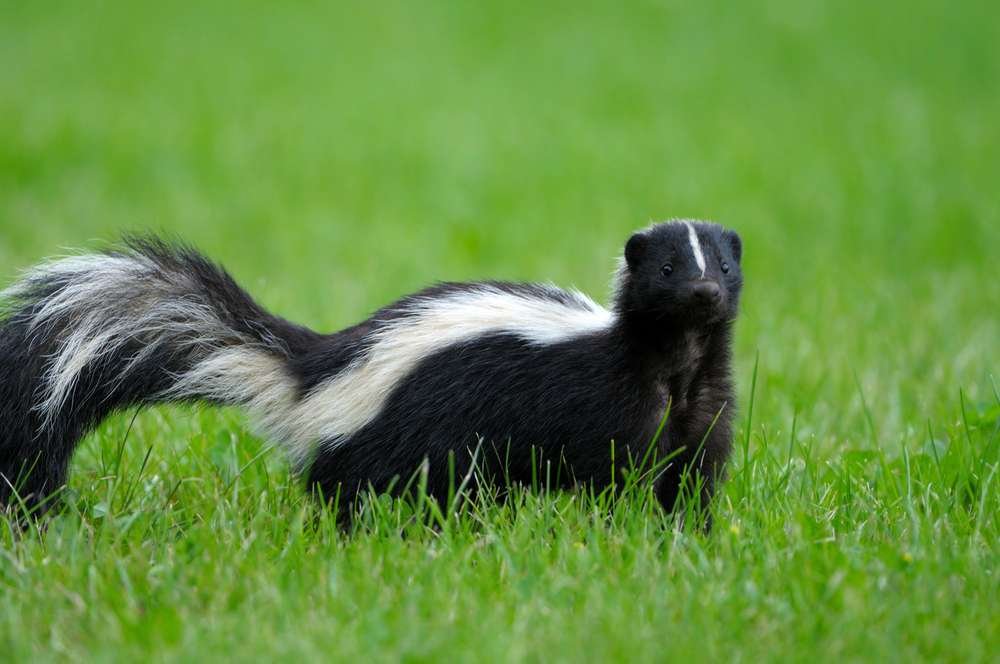African Striped Weasel
- Poecilogale albinucha
- IUCN Status: Least Concern
- Trend: decreasing

- Kingdom: Animalia
- Phylum: Chordata
- Class: Mammalia
- Order: Carnivora
- Family: Mustelidae
- Genus: Poecilogale
Share:
General Information
The African striped weasel is one of the smallest mammalian carnivores in Africa and they look very similar in marking to the striped polecat, with the same white stripes down its back and a thick white bushy tail but smaller, more slender and sleeker. They move in family groups or in pairs, feeding on rodents and small birds.
Description
It has an elongated body and short legs. Adults have a head-body length of 27 to 32 cm, with the tail adding a further 16 to 20 cm. Males are larger than females, weighing an average of 339 g, compared with 251 g. The fur is mostly black, with four white to pale yellowish bands running down the back, a white patch on the top of the head, and a white tail- Length: 27 to 32 cm
- Weight: 339 g
Ecology & Behaviour
African striped weasels are nocturnal hunters of small mammals, birds, and reptiles, but feed almost entirely on rodents of their own size or smaller. The weasels hunt primarily by scent, attacking prey with a sudden lunge and striking at the back of the neck. After the initial strike, they kill by whipping their own bodies and kicking, making use of their thin, lithe, muscular build to stun and tear the prey item. They sometimes store prey in their burrow instead of eating it immediately. The weasel is generally solitary, but individuals sometimes pair up to dig burrows. African striped weasels have been identified as making six different calls. Apart from the warning and aggressive calls mentioned above, and a third call that transitions between the two, another call signals submission of a retreating male, another call indicates surrender during a fight, and a greeting call is used only between males and females and between young and their mother. Young weasels also make distress calls when separated from their mother.
Conservation
They are listed as, “least concern” on the IUCN Red list.
Distribution & Habitat
African striped weasels inhabit much of Africa south of the equator. they are most common in savannah habitats, but may also be found in forests and grasslands.
No donation to this project yet.
| M | T | W | T | F | S | S |
|---|---|---|---|---|---|---|
| 1 | 2 | 3 | 4 | 5 | ||
| 6 | 7 | 8 | 9 | 10 | 11 | 12 |
| 13 | 14 | 15 | 16 | 17 | 18 | 19 |
| 20 | 21 | 22 | 23 | 24 | 25 | 26 |
| 27 | 28 | 29 | 30 | 31 | ||


